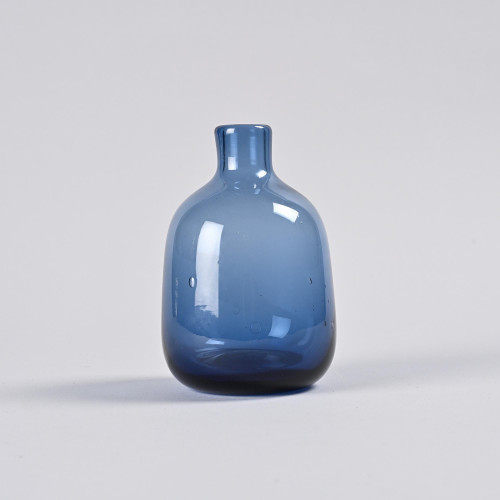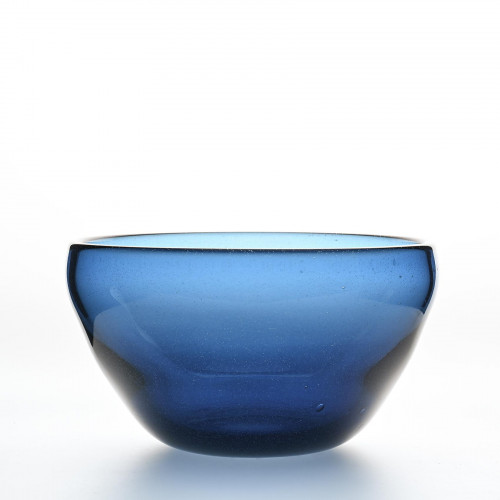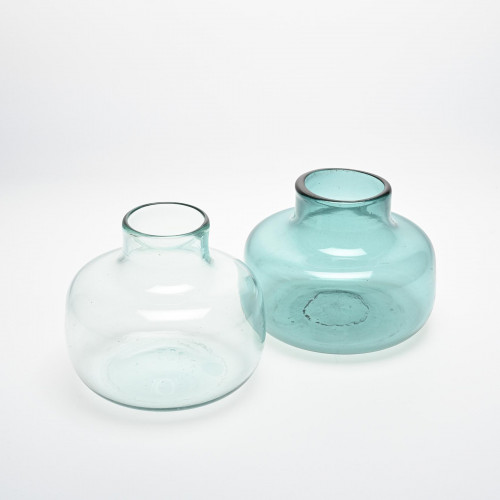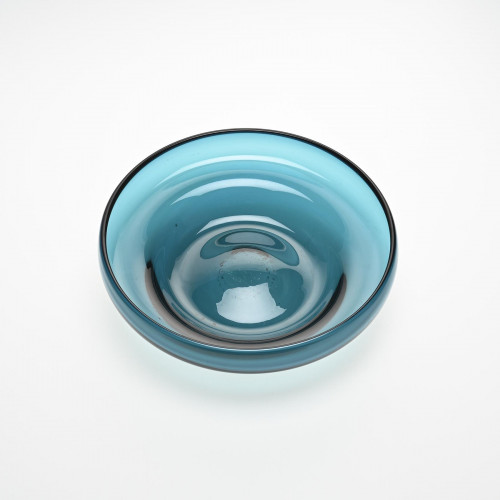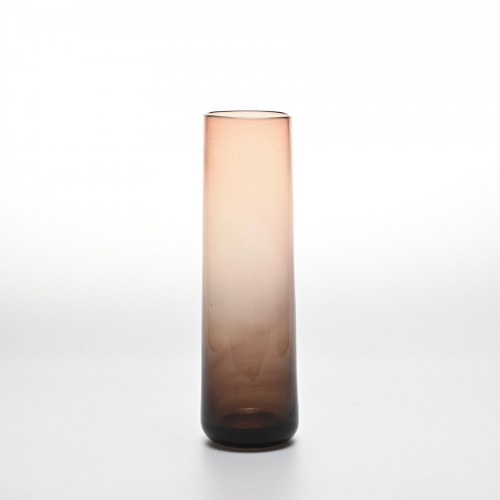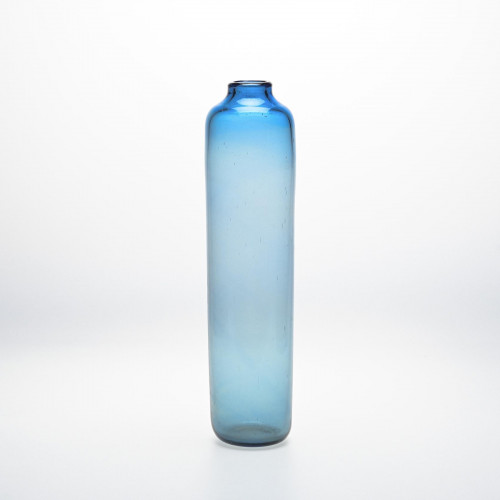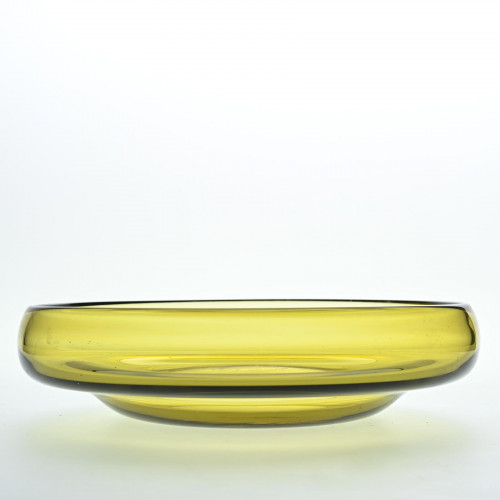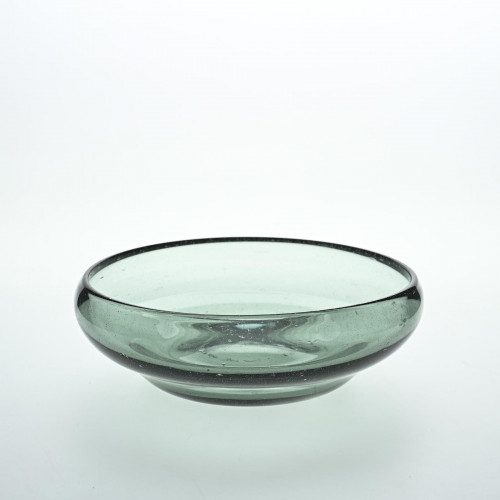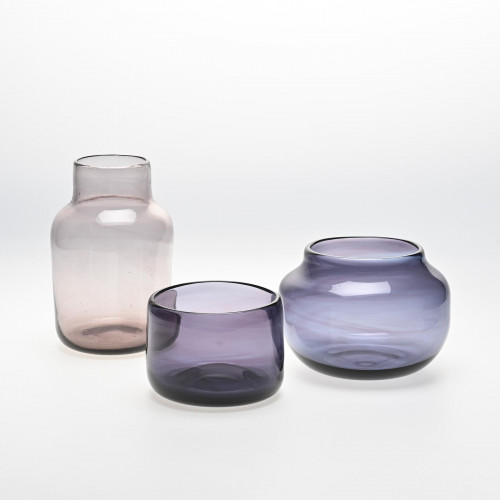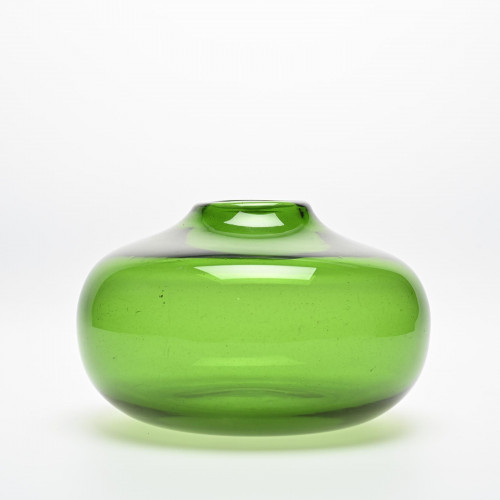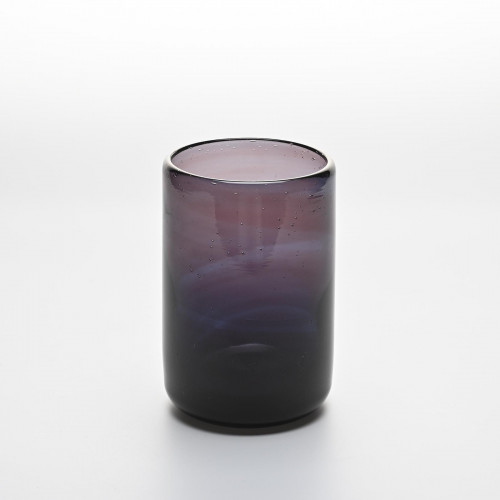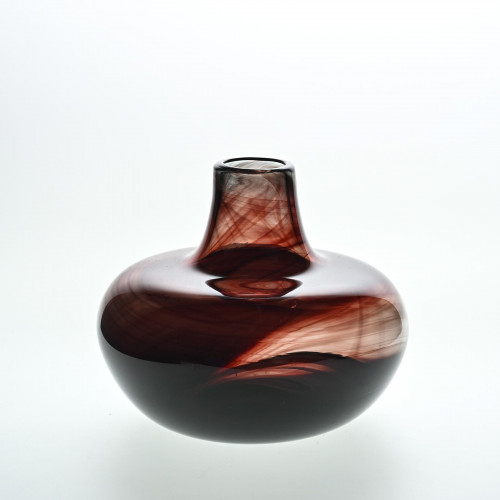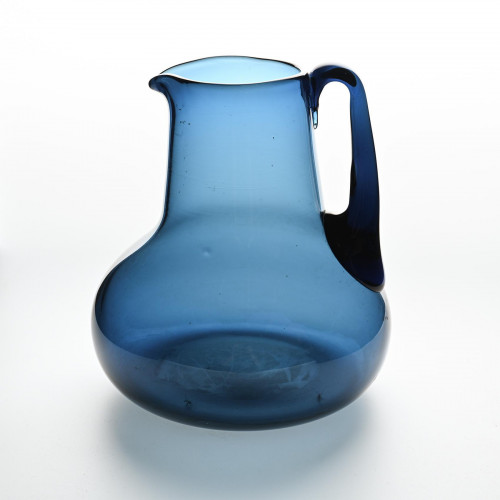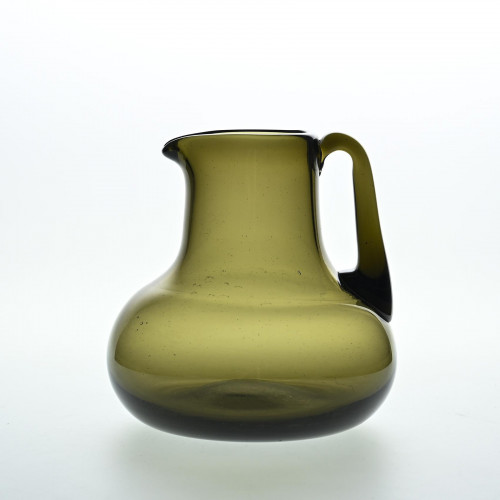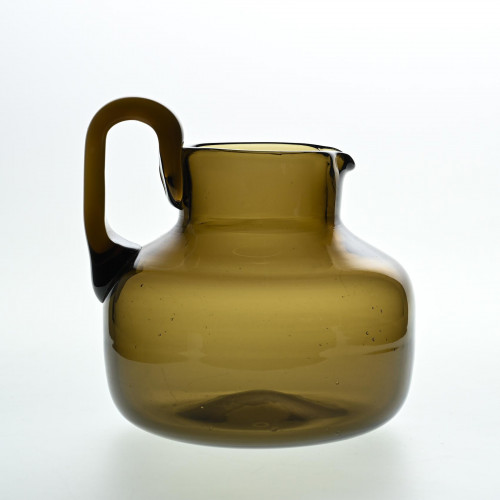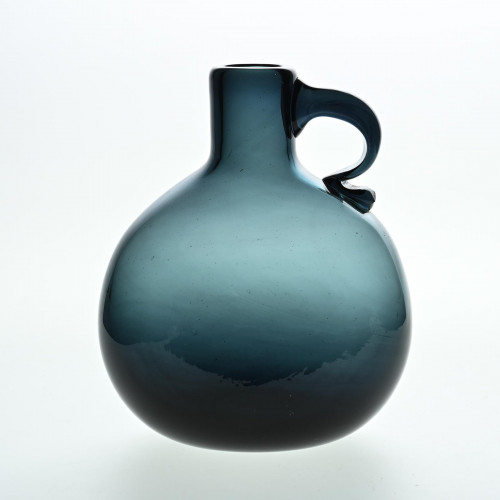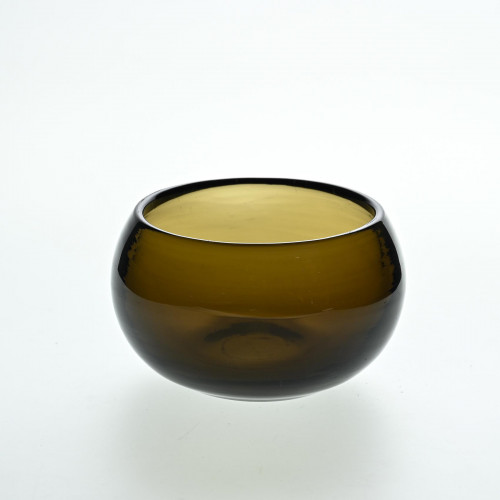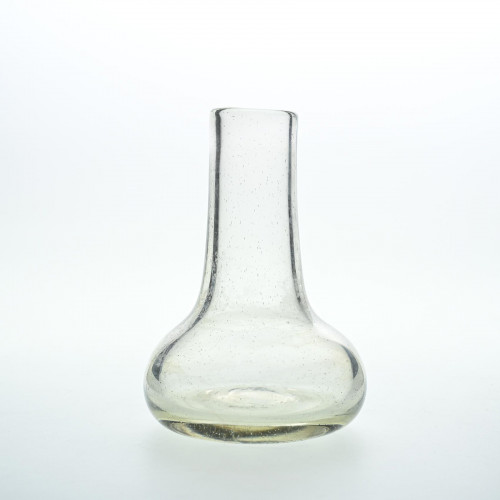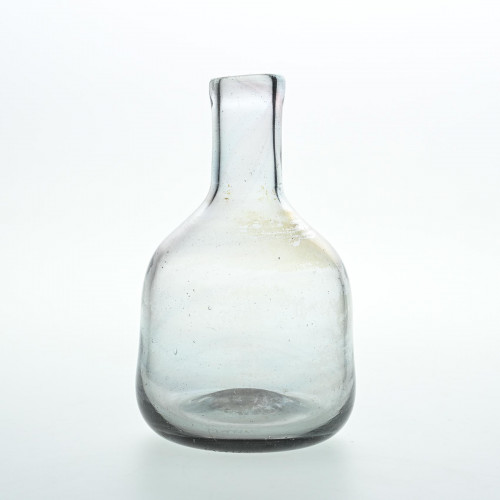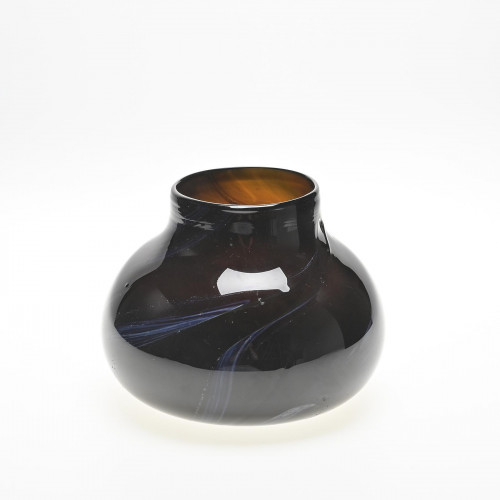Claude Morin (1932 - 2021)
Claude Morin, born in 1905, originates from Dieulefit in France. After training as an engineer, he joins the family textile business and occasionally practices wood and earth carving.
The family factory closes its doors in 1970 and Claude is looking for his new calling. His wife, Florence Seydoux, shows him the way when they visit the exhibition of Etienne Noël, a potter, painter and glassmaker settled in the region. However, at the time, glass is mainly handled in factories for industrial purposes. Glass craftsmanship is uncommon and generally organized in the form of large workshops: those of Biot, directed by Eloi Monod, are one of the few examples. There is, a priori, no place for a self-taught small artisan (or craftsman).
However, Claude Morin is not discouraged and opens his own workshop in Dieulefit in the early 70s: it is called "Le Pontil", in reference to the tool used to blow glass.
In this risky undertaking, he benefits from the advice of Eloi Monod, who became a friend, and especially from the precious help of his wife and Frank Girard. The workshop will stay open until 2005, when Claude retires.
In the ovens he designed himself, Claude Morin produces individual glasses such as vases, pitchers, cups and soliflores, tinted directly into the mass. The range of colors is wide: from purple to yellow, through different shades of oranges, blues and greens. The pieces quickly evolve towards balanced and harmonious lines, very refined like the famous "Crazy Bottles".
The very same year of the opening
Claude Morin, born in 1905, originates from Dieulefit in France. After training as an engineer, he joins the family textile business and occasionally practices wood and earth carving.
The family factory closes its doors in 1970 and Claude is looking for his new calling. His wife, Florence Seydoux, shows him the way when they visit the exhibition of Etienne Noël, a potter, painter and glassmaker settled in the region. However, at the time, glass is mainly handled in factories for industrial purposes. Glass craftsmanship is uncommon and generally organized in the form of large workshops: those of Biot, directed by Eloi Monod, are one of the few examples. There is, a priori, no place for a self-taught small artisan (or craftsman).
However, Claude Morin is not discouraged and opens his own workshop in Dieulefit in the early 70s: it is called "Le Pontil", in reference to the tool used to blow glass.
In this risky undertaking, he benefits from the advice of Eloi Monod, who became a friend, and especially from the precious help of his wife and Frank Girard. The workshop will stay open until 2005, when Claude retires.
In the ovens he designed himself, Claude Morin produces individual glasses such as vases, pitchers, cups and soliflores, tinted directly into the mass. The range of colors is wide: from purple to yellow, through different shades of oranges, blues and greens. The pieces quickly evolve towards balanced and harmonious lines, very refined like the famous "Crazy Bottles".
The very same year of the opening
of his studio, Claude Morin participates in an exhibition organized by the Galerie Club de Genève , showcasing the works of Rodin, Maillol Daumier and Carpeaux. He initially goes there to sell his wood carvings, but his glassworks were a surprising success. He participates in a number of national and international exhibitions for the next decade. His rise to fame is dazzling, making him the pioneer of modernity in his field. His meeting in 1973 with Sybren Valkema - a professor at the Amsterdam Academy of Fine Arts who teaches glassware - may have contributed to his worldwide recognition. Claude Morin is invited to give courses and lectures and he enjoys institutional recognition, some of his pieces being exhibited at the Musée des Arts décoratifs in Paris.
In 1978, he founds the Association for the Development of Artistic Creation of Glass to promote French glass to the general public.
In 2018, a retrospective exhibition on his work as a sculptor and glassmaker from 1961 to 2005 is organized.


